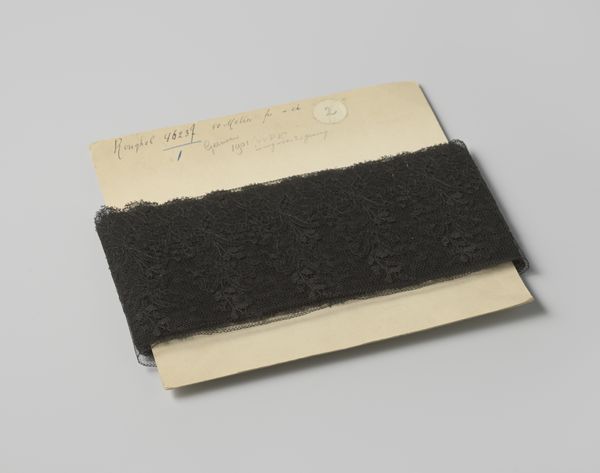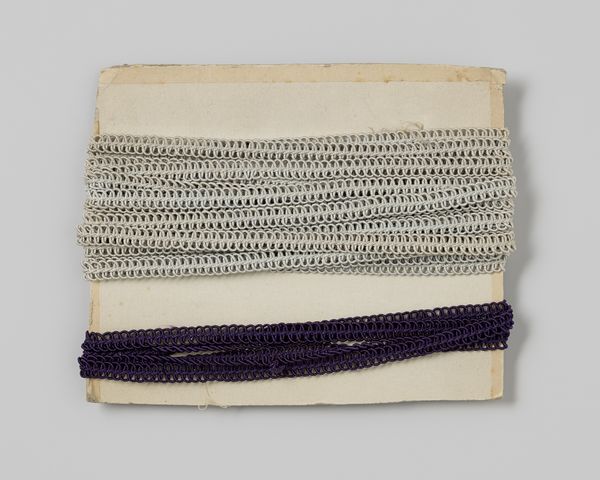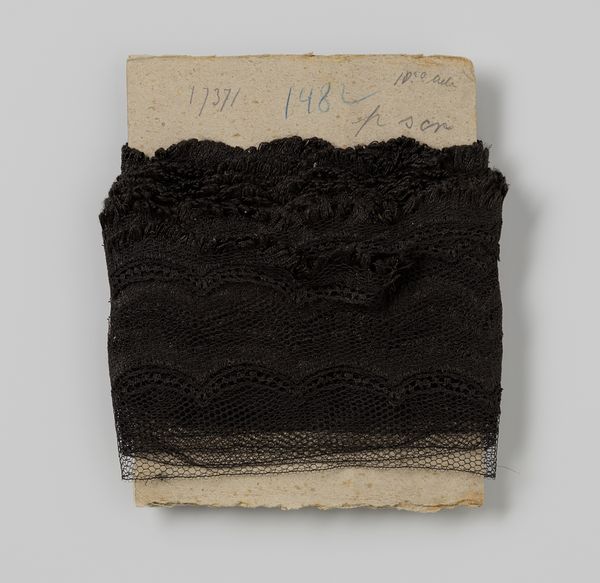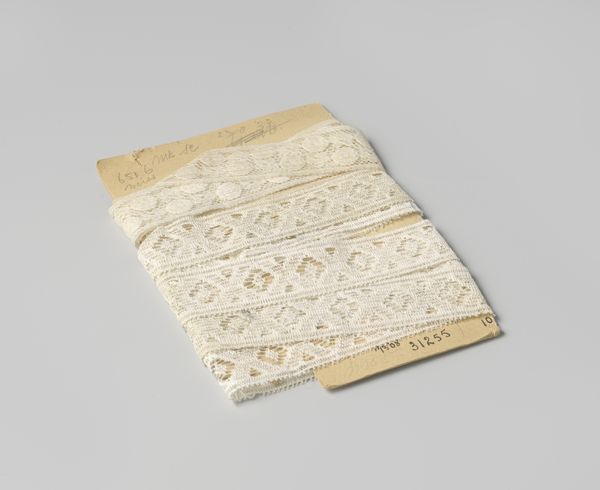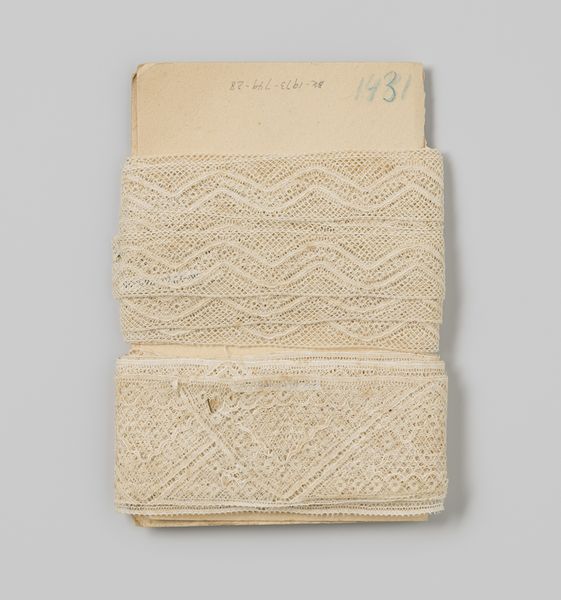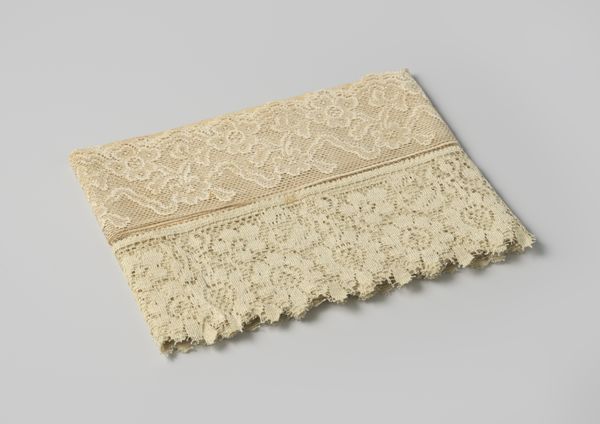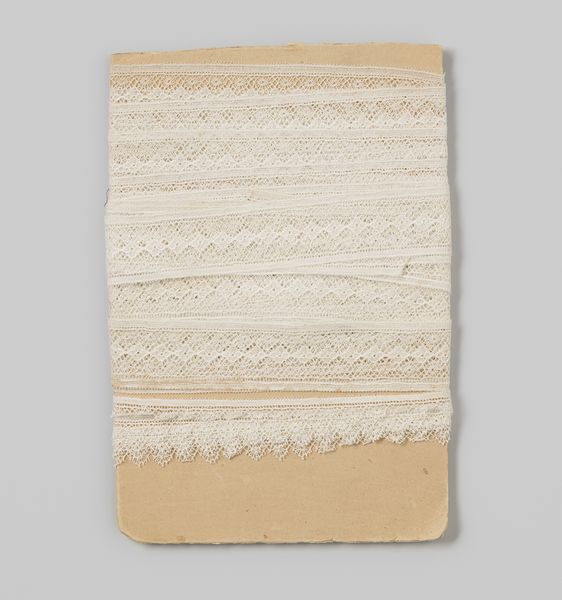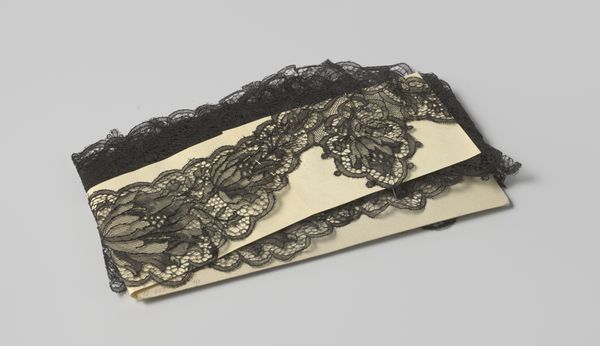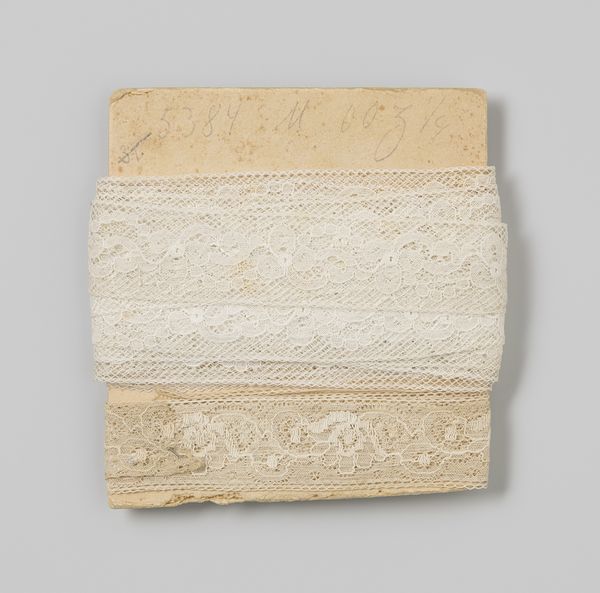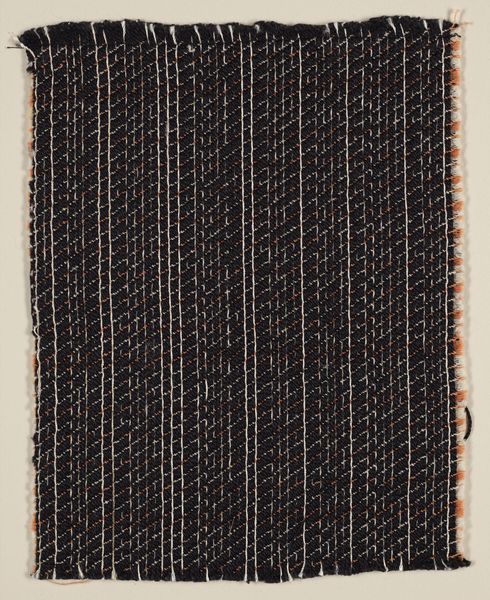
textile, photography
#
product photograph merchandise
#
product shot
#
still-life-photography
#
fashion mockup
#
product fashion photography
#
textile
#
photography
#
product design photgrpaphy
#
clothing photography
#
product mock up
#
graphic design product photography
#
design on paper
#
retail photography
Dimensions: height 2 cm, width 3.5 cm, length 14.8 cm, width 11.5 cm
Copyright: Rijks Museum: Open Domain
Curator: "Karton met zwarte entre-deux en galon," roughly translated as "Cardboard with black insertion lace and ribbon," a photograph dating back to about 1920 and currently residing in the Rijksmuseum. What’s your immediate take? Editor: Austere elegance. The high contrast of the black lace against the cardboard and the simple composition evoke a sense of practicality and understated beauty. Curator: It's interesting how a utilitarian item like lace, meant to adorn garments, is presented here as a subject of photographic study. Black lace carries a lot of weight; mourning, sophistication, perhaps a hidden sensuality. The starkness amplifies this. Editor: Exactly. And let’s not overlook the production process. The creation of such detailed lace speaks to specific labor practices of the time, and the very materiality signals textile's widespread availability through mass manufacture. It invites consideration of value and the devaluation of handwork when faced with mechanization. Curator: I am seeing how it reflects the societal shifts too! The rise of department stores perhaps? Making these trims widely available, but divorced from the human touch that would have imbued it with personal significance beforehand? Editor: It raises the issue of consumerism's effect on artisanal crafts. Mass production makes beautiful lace accessible, yet it changes its meaning; becomes more about decor than a precious expression of skill. We should note the lace looks machine made—there’s too much precision to suggest handmade lace. Curator: A democratization of elegance. Yet a somber elegance. As we know black held very complicated messages in fashion and daily life in 1920’s. It is indeed a stark image, and it pulls the past right into our present moment, the same way that images are a bridge over centuries! Editor: Right! Seeing this laid bare, though, lets us scrutinize the material realities, connecting dots to labor, mass production and how accessible ornamentation becomes. Curator: And for me it connects threads from somber rituals to boudoir allure and the ways those emotional echoes shape how we still encounter such textiles today. Editor: Well, it makes you think about every meter of machine lace, doesn't it?
Comments
No comments
Be the first to comment and join the conversation on the ultimate creative platform.
